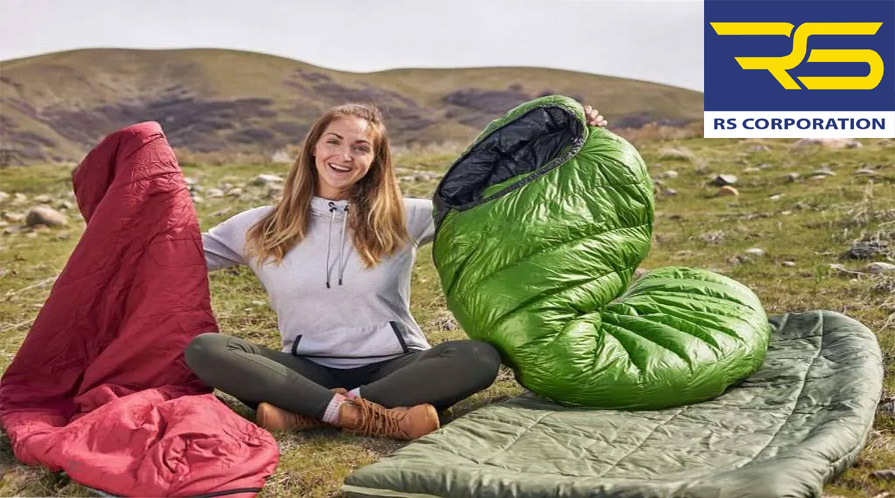Embarking on a backpacking adventure amidst the awe-inspiring wilderness is a journey unlike any other. As you prepare to explore the great outdoors, one of the most crucial companions you’ll need for a successful trip is a high-quality sleeping bag. A backpacking sleeping bag is not just a mere piece of gear; it’s your shelter, your cocoon of comfort, and your defense against the elements. But with the myriad of options available, how do you select the perfect sleeping bag that will keep you warm, cozy, and rested during those nights under the stars?
In this guide, How to Choose a Backpacking Sleeping Bag? we’ll unravel the intricacies of choosing a backpacking sleeping bag that aligns with your unique needs and the demands of your expedition. From deciphering temperature ratings to understanding insulation types, we’ll walk you through the essential factors that will empower you to make an informed decision. Whether you’re a seasoned hiker or a first-time explorer, the right sleeping bag can make all the difference in the quality of your outdoor experience. So, let’s delve into the world of backpacking sleeping bags and equip you with the knowledge you need to find your ideal companion for nights on the trail.
Why is having the right sleeping bag so important?
Imagine going hiking and walking for a long time. What do you want to do when you get back to camp, worn out and tired? You should just go to bed and rest, right?
If your bag is very awkward, you won’t be able to sleep well. Even if you’re tired, it will be hard to fall asleep if your sleeping bag is too hot, too cold, or too thick.
To stay active during your trip, you need to get a good night’s sleep. Follow this link to see a lot of different kinds of outdoor gear.
1. Temperature Ratings
Sleeping bags are rated to keep you warm to a certain temperature. Imagine that sleeping bags have ratings for the seasons. You can get a bag for summer, three seasons, or winter.
A summer bag is good down to about 0°C, a three-season bag is good down to -10°C, and a winter bag is good down to -15°C or lower.
Since sleeping bags are rated by the coldest temperature they can be used for, you should choose one that is rated at least 5 degrees Celsius colder than the temperatures you expect to find. In the summer, I often only close up half of a 3-season bag.
2. EN Rating
Look for sleeping bags that have been tested by the EN to get the most accurate temperature rates. Most of the time, this will be bigger names whose sleeping bags are sold in Europe. This test is done by a third party and gives bags ratings for comfort, limit, and extreme.
Using this measure, you can compare the ratings of sleeping bags and be pretty sure of how warm they are. The EN Limit Rating for a Mountain Hardwear Ratio 15 is -11 Celsius, and the Limit Rating for a North Face Blue Kazoo is -10 Celsius. Even though they fit differently, they insulate almost the same.
Comfort is the lowest amount at which women or people who get cold at night will be happy. The limit is the lowest temperature at which guys or people who sleep hot will be comfortable. If you wear the extreme for six hours, you won’t die of cold.
These rates are based on wearing warm socks and a full thermal base layer. If you like to sleep without clothes on, you should get a bag that is at least 5 degrees Celsius warmer.
If you’re looking at a sleeping bag that isn’t EN rated, read reviews to see how true the rating the brand gave the bag is.
3. Down vs. Synthetic Fill
When looking for a sleeping bag, it’s also important to think about whether it’s filled with down or something else. After all, the insulating material will affect many other things about a bag, like its temperature grade and how easy it is to pack. Down is made of the feathers and plumage of geese and ducks (see our note below about properly sourced down for more information). Most synthetic fill is made of polyester. Both materials have pros and cons, which we’ll talk about below.
Down is known for being very warm, light, and easy to pack. With its best-in-class mix of warmth to weight, down gives you more for your money than synthetic fill. Down is also usually more sturdy than synthetic because it doesn’t pack out as easily. This means that you might be able to use a down bag for more seasons. But there are a few things you should know about this “miracle” barrier. First of all, when feathers and hair get wet, they get flat and lose their loft. This means that they can no longer trap warm air. Synthetic fill, on the other hand, stays fluffy even when it gets wet, which means it keeps insulating. Lastly, the price may be the biggest problem with down. Because of how well they work and how hard it is to get them, down sleeping bags are always more expensive than their synthetic cousins. Because of this, synthetic bags are more common among casual tourists and shoppers who want to save money. But if you want to keep your pack as light and small as possible, a down sleeping bag is hard to beat.
4. Weight and Packability
The more serious your trips are, the more important it is that your gear is light and easy to carry. In general, a lighter, more packable bag should have a high fill power, a low denier for the shell cloth, a warm temperature rating for its weight, and a mummy shape.
As with most types of hiking gear, going ultralight has its pros and cons. The most expensive bags on the market come from names like Western Mountaineering and Feathered Friends. Also, the thin shell fabrics make them more likely to get snagged or torn, the zippers are weak (and often get caught), and the shape and features are often cut down to save weight. But for real backpackers who go out often and cover a lot of ground quickly, the lighter weight and ability to pack up are well worth these problems.
5. Shell Denier and Durability
When you’re getting ready for your next camping trip, the outer shell of your sleeping bag acts as a shield between you and the weather. The inner material, which is often measured in denier, is a key factor in how long and how well your sleeping bag will last. The shell protects you from wetness, abrasions, and wear-and-tear that come with rough terrain and unpredictable weather, just like a knight’s armor.
In this look at “Shell Denier and Durability,” we’ll learn more about sleeping bags for camping and their outer layers. We’ll explain what denier means, talk about the different shell materials, and show you how to choose a sleeping bag that will last through time and experience. Your choice of shell denier can make the difference between a reliable companion on an alpine trek and a piece of gear.
6. Bag Shape
When it comes to weight and being easy to pack, the shape of the sleeping bag is also important. A mummy bag is made to fit the shape of a person’s body. It is narrow at the feet and legs, wider at the hips and shoulders, and has a hood that goes around the head to keep heat in. The mummy form uses the least amount of materials to make it easy to pack and light, so it’s the most popular choice among backpackers. But if you sleep on your side or move around a lot at night, a roomier bag might be better. Most makers list the shoulder and hip girths of their bags so you can compare them. And Nemo makes “spoon” bags like the Nemo Disco 30 that have a lot of room at the shoulders and knees. As always, there are pros and cons. Bags with more space will be larger and more likely to have drafts and cold air pockets than bags with a mummy shape.
7. Sizing and Fit
Sleeping bag sizes vary from brand to brand and bag to bag, but most come in two to three length-based sizes for both men and women. Most of the time, a bag’s width, which is usually measured at the hips, shoulders, and feet, will get bigger as it gets longer. Women’s sleeping bags are usually shorter, wider at the hips, and narrower at the shoulders than men’s or unisex bags. They will also be warmer, as we said in the “Temperature Ratings” part above. Even though getting careful measurements of your body can help a lot, the best way to make sure the bag fits right is to go to your local gear shop and try on a few different bags.
Conclusions
In the world of traveling, your sleeping bag is your safe place to rest at the end of the day. Each choice shows what kind of adventurer you are based on things like protection, size, and weather. When you go out into the wild, may your sleeping bag be a place of comfort that gives you more than just a place to sleep. Here’s to being embraced by nature and to the dreams that come true under the stars.
Read More Article : How to Choose the Perfect Jute Bag



